Introduction
Welcome to refining your yoga practice and gaining strength, flexibility, and mindfulness. Yoga, an ancient holistic practice, has many physical and mental advantages. As you develop in yoga, you may crave new difficulties and intermediate positions that elevate your practice. We give the top 10 intermediate yoga poses in this article. These positions balance physical intensity, mental focus, and spiritual alignment. These positions will challenge and connect you with yourself, whether you’re a beginner or an experienced yogi wishing to enhance your practice. Click here for the 10 Best Advanced Level of Yoga Poses.
Understanding Intermediate Yoga Poses
Definition of Intermediate Yoga Poses
From beginner to advanced, intermediate yoga poses are crucial. Intermediate asanas require more strength, flexibility, and balance than beginner poses but are more accessible.
These poses require more complex movements, deeper stretches, and mental and physical focus. Intermediate poses allow yogis to explore and deepen their practice, fostering mat mastery.
Characteristics of Intermediate-Level Asana
- Increased complexity: Beginner postures have simpler movements and transitions than intermediate poses.
- Greater physical demand: These poses push your strength, flexibility, and balance more deeply, requiring more muscle engagement.
- Deeper stretches: Intermediate postures promote flexibility and mobility by stretching specific muscle groups deeper.
- Balance and stability: Intermediate poses challenge your balance and stability in difficult postures.
- Mind-body connection: Maintaining alignment and control in intermediate postures requires more mental focus.
Here are the Top 10 Intermediate Yoga Poses
Intermediate Poses
- Extended Side Angle Pose (Utthita Parsvakonasana)
- Tree Pose (Vrksasana)
- Seated Forward Bend (Paschimottanasana)
- Boat Pose (Navasana)
- Plank Pose (Phalakasana)
- Upward-Facing Dog (Urdhva Mukha Svanasana)
- Reclining Bound Angle Pose (Supta Baddha Konasana)
- Revolved Triangle Pose (Parivrtta Trikonasana)
- Half Moon Pose (Ardha Chandrasana)
- Camel Pose (Ustrasana)
A small review of these intermediate yoga poses.
1. Extended Side Angle Pose (Utthita Parsvakonasana)
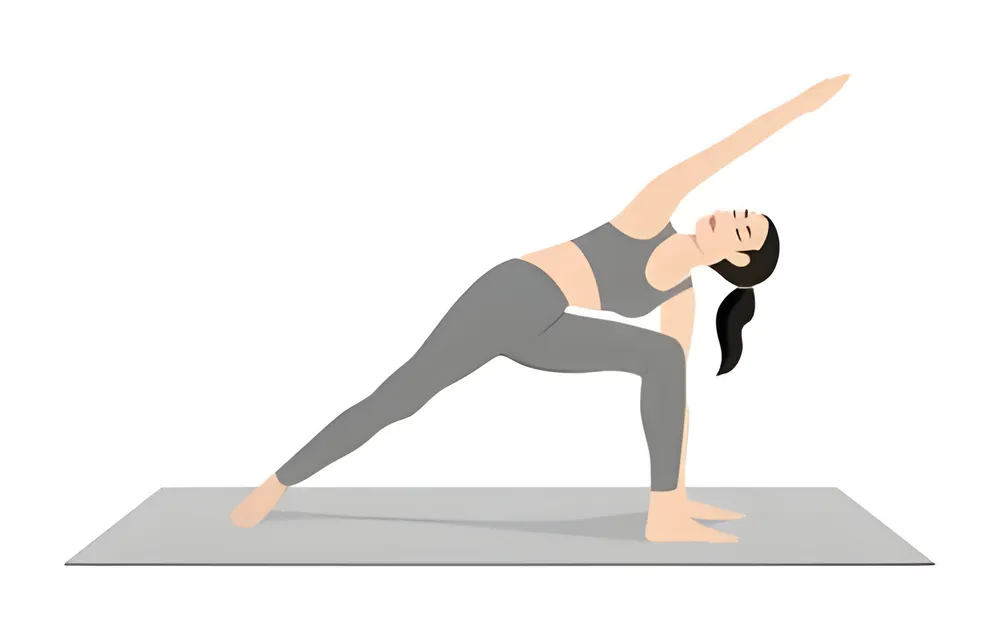
Extended Side Angle Pose (Utthita Parsvakonasana in Sanskrit) has many mental, physical, and spiritual advantages. Start in a Warrior II stance and extend one arm to the ground while raising the other arm overhead to create a long line of energy from the fingers to the foot. A deep stretch engages the legs, hips, spine, and shoulders, promoting balance and stability. Extended Side Angle Pose strengthens the legs, hips, and groin and increases abdominal organ function for digestion and purification. Regularly practicing this pose helps improve attention, reduce tension, and promote inner serenity.
2. Tree Pose (Vrksasana)
Tree Pose (Vrksasana in Sanskrit) denotes strength, equilibrium, and rootedness. Start this stance by standing tall with feet planted. Move your weight to one foot and lift the other, placing the sole against the inner thigh or calf of the standing leg to avoid the knee joint.
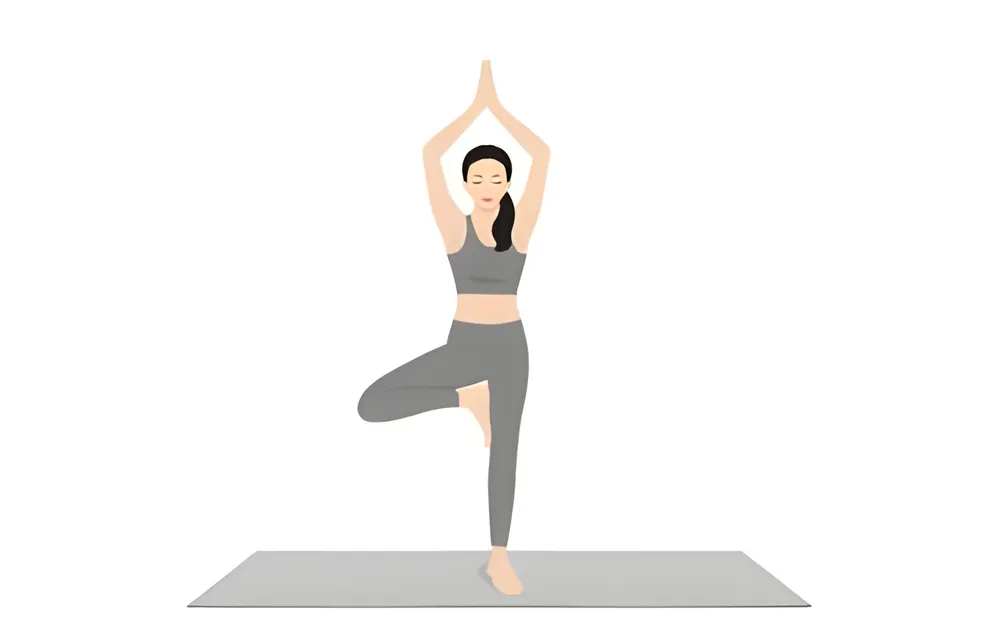
Find your equilibrium and place your palms at your heart or aloft like branches. Draw energy from the earth through your crown by engaging your core and lengthening your spine. Tree Pose boosts concentration and strengthens legs, ankles, and core. It encourages us to stay grounded on difficult days and aim for greater heights. Breathe deeply in this stance to relax and connect with nature.
3. Seated Forward Bend (Paschimottanasana)
Seated Forward Bend (Pachimottanasana in Sanskrit) is a rejuvenating yoga practice that stretches the entire back. Sit on the floor with your legs extended and your feet flexed to practice this pose. After lengthening your spine, hinge at the hips and fold forward, leading with your chest. Reach your hands to your feet or shins with a straight spine. A strap around your feet can help you stretch if you can’t reach them.
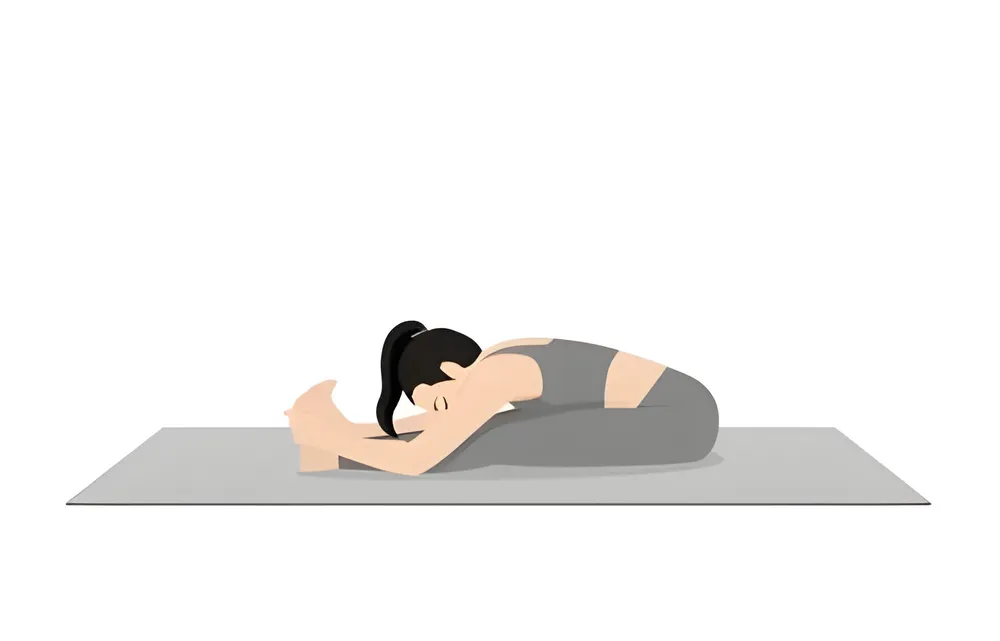
Seated Forward Bend soothes the mind, removes stress, and stimulates the stomach organs, facilitating digestion and relaxation. Regular practice of Paschimottanasana improves spine, hamstring, and hip flexibility and calms the nervous system. Breathe deeply and surrender into the stance with each exhalation to relieve tension and discover calm.
4. Boat Pose (Navasana)
Boat Pose, or Navasana in Sanskrit, is an assertive yoga posture that strengthens the core and improves balance. Sit with your knees bent and feet flat on the floor to practice this pose. Balance on your sit bones by leaning back and lifting your feet. As you extend your legs forward, keep your spine straight and activate your abdominal muscles to form a V. Reach forward parallel to the ground or extend your arms beside your legs.
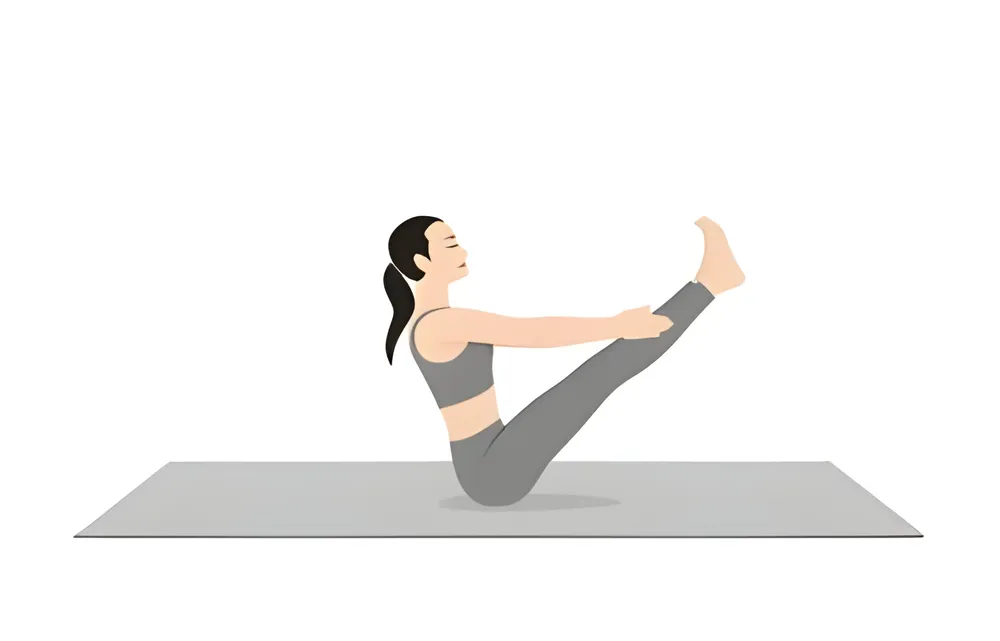
Boat Pose engages the core, hip flexors, and lower back, building strength and endurance. It boosts digestion and excretion by stimulating digestive organs. Hold the posture while inhaling profoundly and concentrating. You can alter by bending your knees or supporting yourself with your hands. Boat Pose can build strength, resilience, and empowerment with consistent practice.
5. Plank Pose (Phalakasana)
Plank Pose (Phalakasana in Sanskrit) is a basic yoga pose that strengthens the body. Push-up with hands shoulder-width apart and wrists beneath shoulders to practice this pose. Straighten your legs and core to form a straight line from head to heels. Sagging or arching your back could be better. Keep your spine neutral and glance slightly forward. Avoid upper body collapse by pressing into your palms and lifting your shoulders.
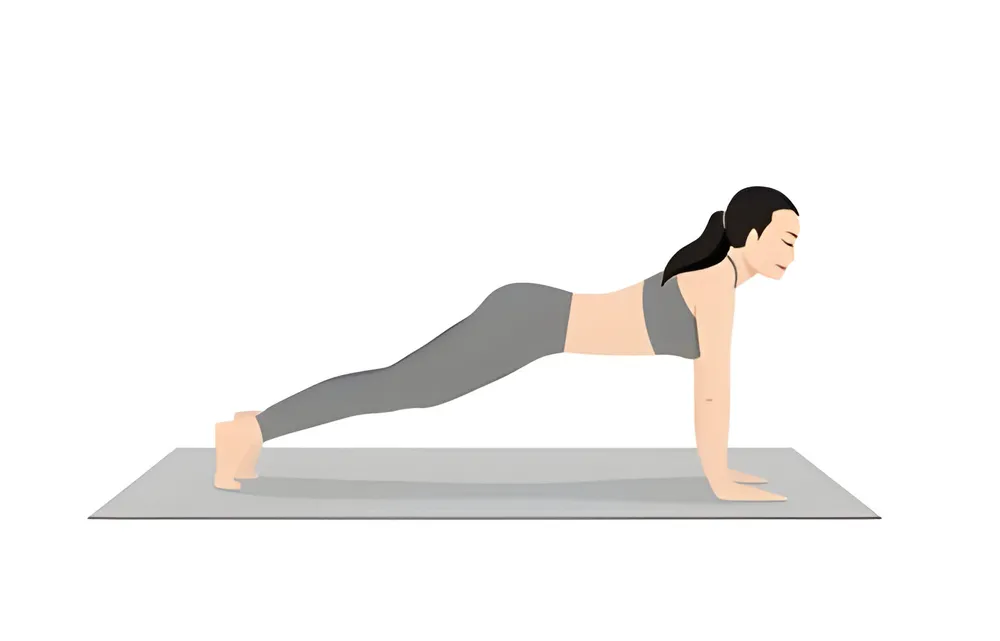
Plank Pose strengthens the core, arms, shoulders, and legs, improving posture and stability. It enhances endurance and prepares the body for advanced yoga and exercise. Focus on calm breathing and hold the pose as long as comfortable, gradually increasing your time. Modifications include kneeling or putting the forearms down. Regular Phalakasana practice builds physical and mental resilience, promoting well-being.
6. Upward-Facing Dog (Urdhva Mukha Svanasana)
Upward-Facing Dog, or Urdhva Mukha Svanasana in Sanskrit, is a powerful yoga pose that opens the heart and lungs and expands the body. Lay face down on your mat with palms beside ribs and elbows bent to practice this pose. Straighten your arms and stretch your spine as you press into your hands and lift your chest. Relax your shoulders away from your ears and engage your core to support your lower back. Raise your thighs and knees and plant your feet on the mat. Face forward or slightly upward, stretching the neck and keeping a modest upper back curve.

The chest, shoulders, abdomen, arms, wrists, and back are stretched and strengthened with Upward-Facing Dog. It improves posture, reduces tiredness, and increases spine flexibility. Deep, steady breathing helps open the chest and expand the lungs. Urdhva Mukha Svanasana boosts energy, vitality, and spirit with frequent practice, rejuvenating and empowering you.
7. Reclining Bound Angle Pose (Supta Baddha Konasana)
Reclining Bound Angle Pose (Supta Baddha Konasana in Sanskrit) is a wonderfully peaceful and restorative yoga position that softly opens the hips and chest and promotes inner tranquility. Lay flat on your back with your knees bent and feet on the mat to practice this pose. Bring your feet together and let your knees fall open, making a diamond shape with your legs.
You can support your knees using blocks or cushions to avoid strain. Relax your arms beside your body with palms up and close your eyes if comfortable. Allow your breath to calm and steady as you relax into the pose, exhaling tension.
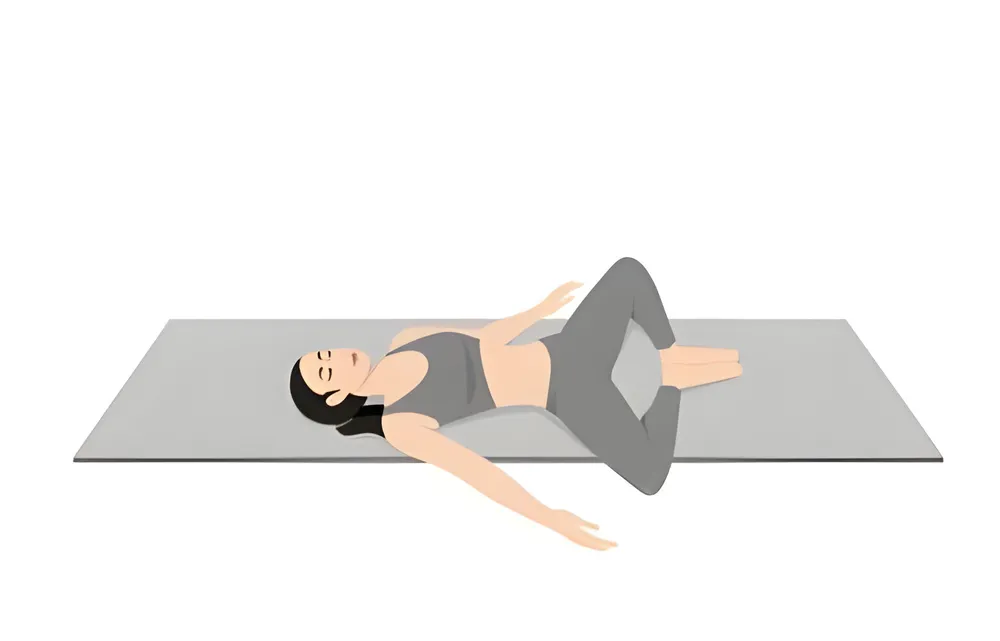
The inner thighs, groin, hips, chest, and shoulders are gently stretched in Supta Baddha Konasana. It aids digestion and calms the mental system by stimulating abdominal organs. This pose is great for relaxing at night or as part of a restorative yoga sequence since it relieves stress, anxiety, and weariness. Stay in the stance for many minutes to relax your body and mind.
8. Revolved Triangle Pose (Parivrtta Trikonasana)
Parivrtta Trikonasana, or Revolved Triangle Pose, is a dynamic yoga pose that twists and strengthens muscles.

Stand on top of your mat to perform this pose. Spread your feet 3–4 feet apart with your toes pointed forward. Breathe and extend your arms at shoulder height. Exhale and pivot on your left foot while maintaining your legs straight to twist your body right. Put your left hand on the floor or a block outside your right foot. Hold your right arm up and look at your right hand or the ground, depending on your neck comfort. Press into the back foot’s outside edge with both legs engaged and hard. Click here for Triangle Pose.
Revolved Triangle Balance, stability, and hamstring, hip, and spine stretching are achieved in this pose. Compressing and massaging stomach organs aids digestion and detoxification. Repeat the stance on the other side to balance and reap its benefits. Breathe deeply and relax as you twist and lengthen the spine.
9. Half Moon Pose (Ardha Chandrasana)
Half Moon Pose, or Ardha Chandrasana in Sanskrit, is a graceful and dynamic yoga posture that enhances balance, strength, and flexibility.
Start this pose standing on top of your mat. Spread your feet 3–4 feet apart with your toes pointed forward. Hold your arms at shoulder height apart. Place your weight on your right foot and support your left hand with the ground, a block, or a right shin. Engage your core and slowly elevate your left leg to hip height while extending your right arm to the sky, producing a straight line from fingertips to toes. Maintain a steady look and focus for balance.

The legs, ankles, core, groins, hamstrings, and spine are strengthened and stretched in Ardha Chandrasana. It enhances focus, lightness, and expansion in the body and mind. Explore this empowered stance with ease and stability by breathing deeply. For body balance and complete benefits, repeat on the other side.
10. Camel Pose (Ustrasana)
Camel Pose, or Ustrasana in Sanskrit, is a heart-opening yoga posture that stretches the front of the body while also strengthening the back muscles and improving spinal flexibility.
Kneel hip-width apart on your mat to practice this pose. Put your feet and hands on your lower back, fingers pointing down. Inhale and raise your chest to the sky, softly arching your back and tilting your head if comfortable. Reach back to grab your heels one at a time if you feel stable. Hold your thighs perpendicular to the ground and engage your core to support your lower back. Open your heart and chest by relaxing your neck and breathing deeply into the stretch.
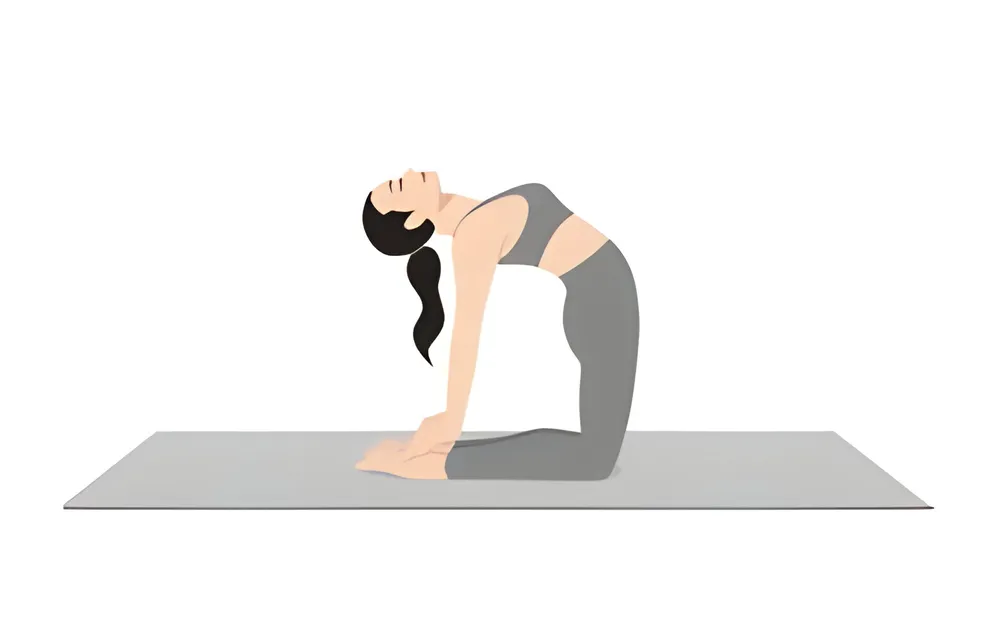
The hip flexors, abdomen, and chest are stretched in Camel Pose, which improves digestion and thyroid function. It can ease back pain and weariness and boost mood and vitality. Carefully enter this deep backbend, listening to your body and respecting its limits. Release by slowly kneeling and resting in the Child’s Pose to balance the stretch.
Conclusion
Finally, these top 10 intermediate yoga poses allow for deeper physical and mental inquiry. Each pose requires strength, flexibility, and mindfulness, from the extended side angle to the camel stance. These positions will improve your physical ability and reconnect you with yourself.
Intermediate yoga poses require mental focus, physical intensity, and spiritual alignment to bridge beginner and advanced levels. These poses encourage mat mastery and personal growth through increased complexity, deeper stretches, and balance and stability challenges.
Add these intermediate postures to your routine to improve your practice or try new things. From core strengthening to heart opening, each pose promotes physical and emotional health. Explore these intermediate yoga positions to discover yourself and improve your strength, flexibility, and mindfulness on and off the mat.




